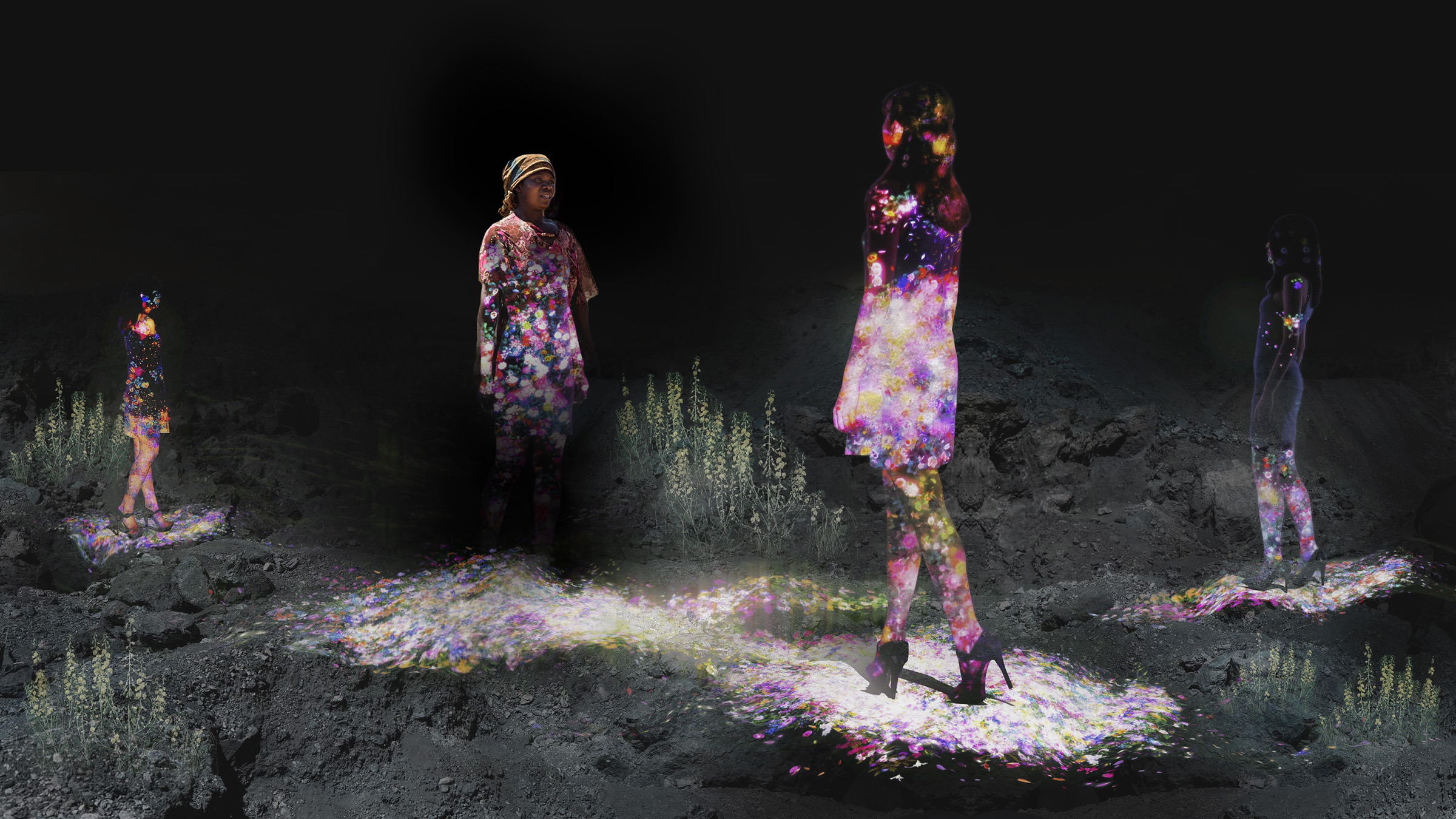 In this illustration, an interactive projection piece that makes connections between people in a room (TeamLab, Flowers Bloom on People) is haunted by the technology that makes it possible.
In this illustration, an interactive projection piece that makes connections between people in a room (TeamLab, Flowers Bloom on People) is haunted by the technology that makes it possible.
GHOSTWORLDS
A critical ingredient in the lithium ion batteries that allow electronics to be portable is cobalt. Cobalt is a very geographically limited resource, with over 60% of the global supply originating in the Democratic Republic of Congo (DRC). A 2016 Washington Post exposé revealed the violently inhumane conditions associated with cobalt mining in the DRC and raised consumer pressure on electronics manufacturers, but ultimately has not resulted in significant changes to the industry’s practices.
As a discipline that is rooted in the spatialization of social structures, Landscape Architecture is uniquely suited to intervene in the void that global capitalism and communication technology have opened between local actions and distant, unseen consequences.
This proposal would transpose the sensory experience of an artisanal cobalt mine onto the conspicuously introverted Apple Park campus, scarring the garden to position engineers with the power to make manufacturing decisions face to face with the consequences of those choices.
MLA Thesis
Advisor | Silvia Benedito
Harvard GSD | Spring 2018
Advisor | Silvia Benedito
Harvard GSD | Spring 2018
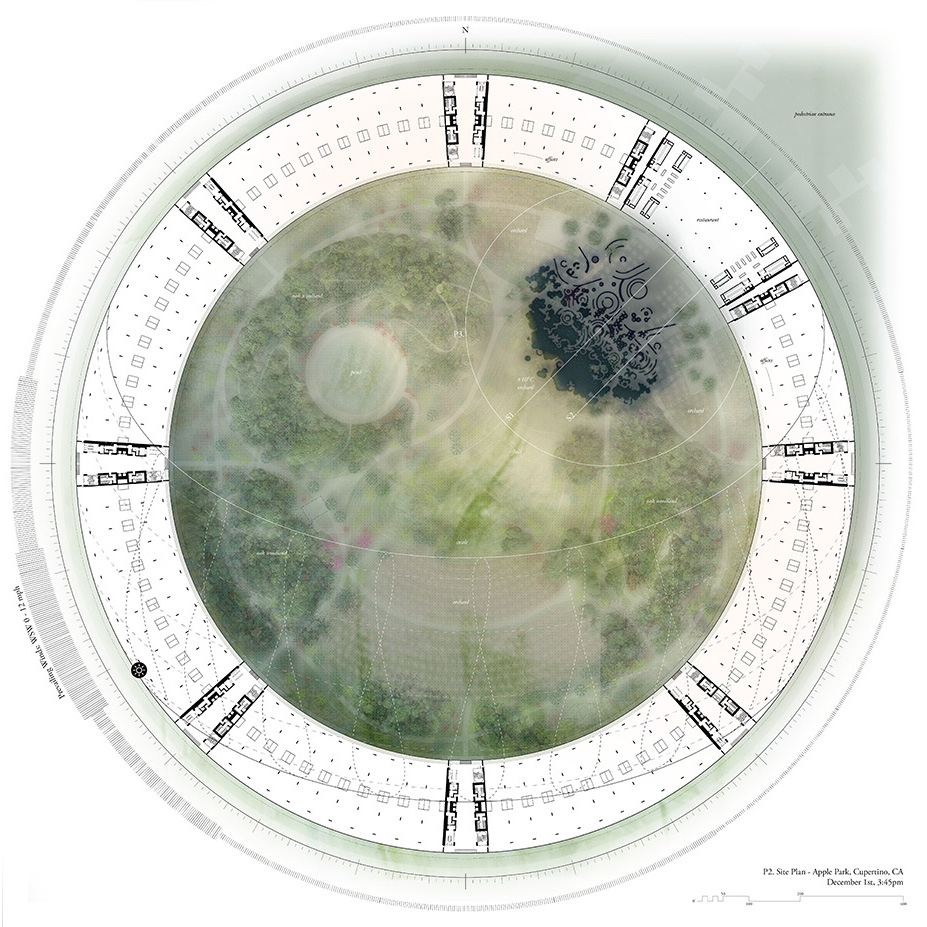
Apple Park is a 175-acre homage to the life and work of Steve Jobs. Within a rolling meadow, a sleek white ring designed by Foster + Partners, one mile in circumference, surrounds a paradisiacal walled garden designed by OLIN. From the main pedestrian entrance in the Northeast corner of the site, employees enter a four-story atrium containing a restaurant. The café seating inside extends into the interior courtyard. This is where I propose to scar the garden.
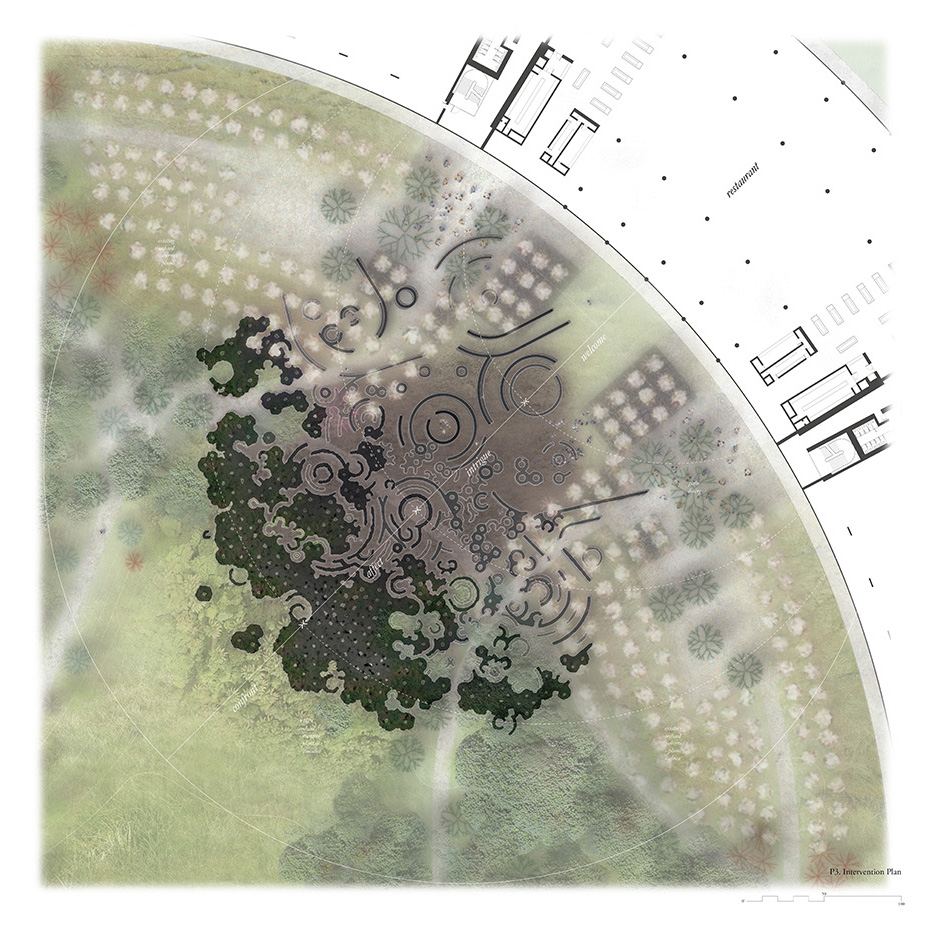
As you approach from restaurant, rammed earth walls make low seating and long curves that draw you into the space. The walls become denser as you move into the space. Walls between elbow and eye height determine the grading, with the top of wall at the datum of the atrium’s finished floor. Shadows provide relief from the baking Silicon Valley sun. Further into the labyrinth, tighter curves make small rooms that require some effort to discover.
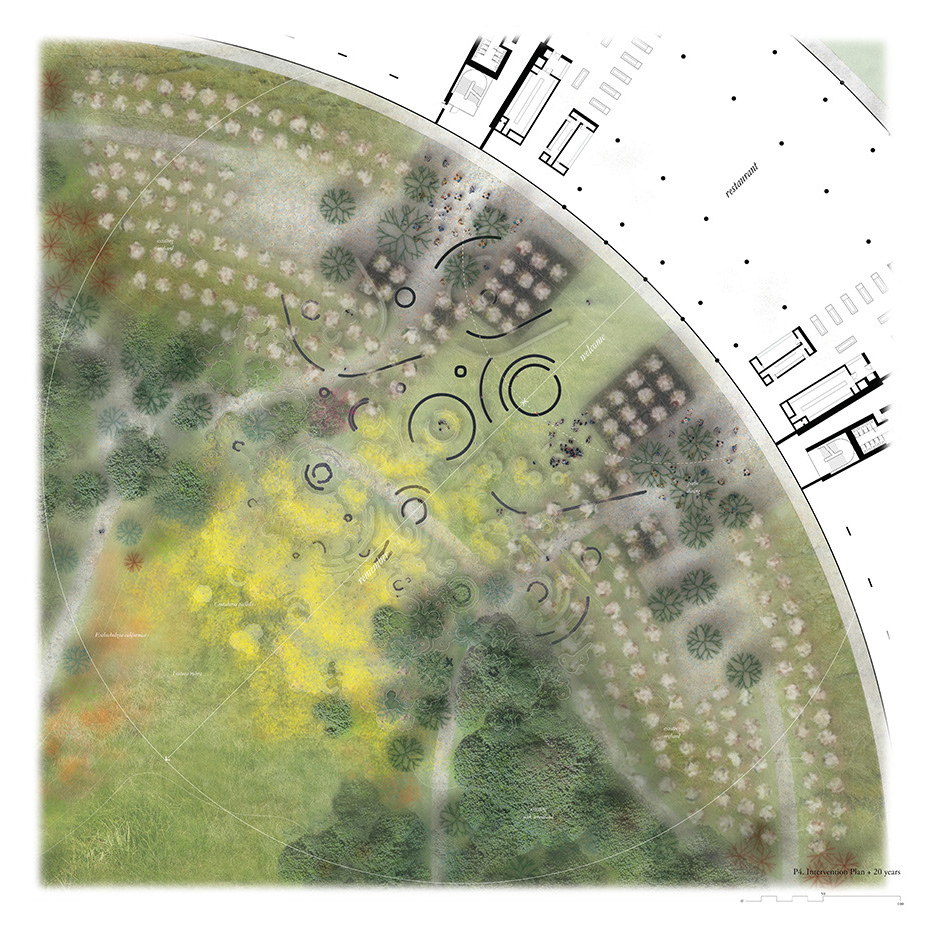
Over time, the rammed earth walls are allowed to erode into a pocked landscape. The existing native California grasses reclaim the warmed orchard. The grasses and crotalaria spread over the remnants of the structure. A few low walls, constructed from concrete, persist.
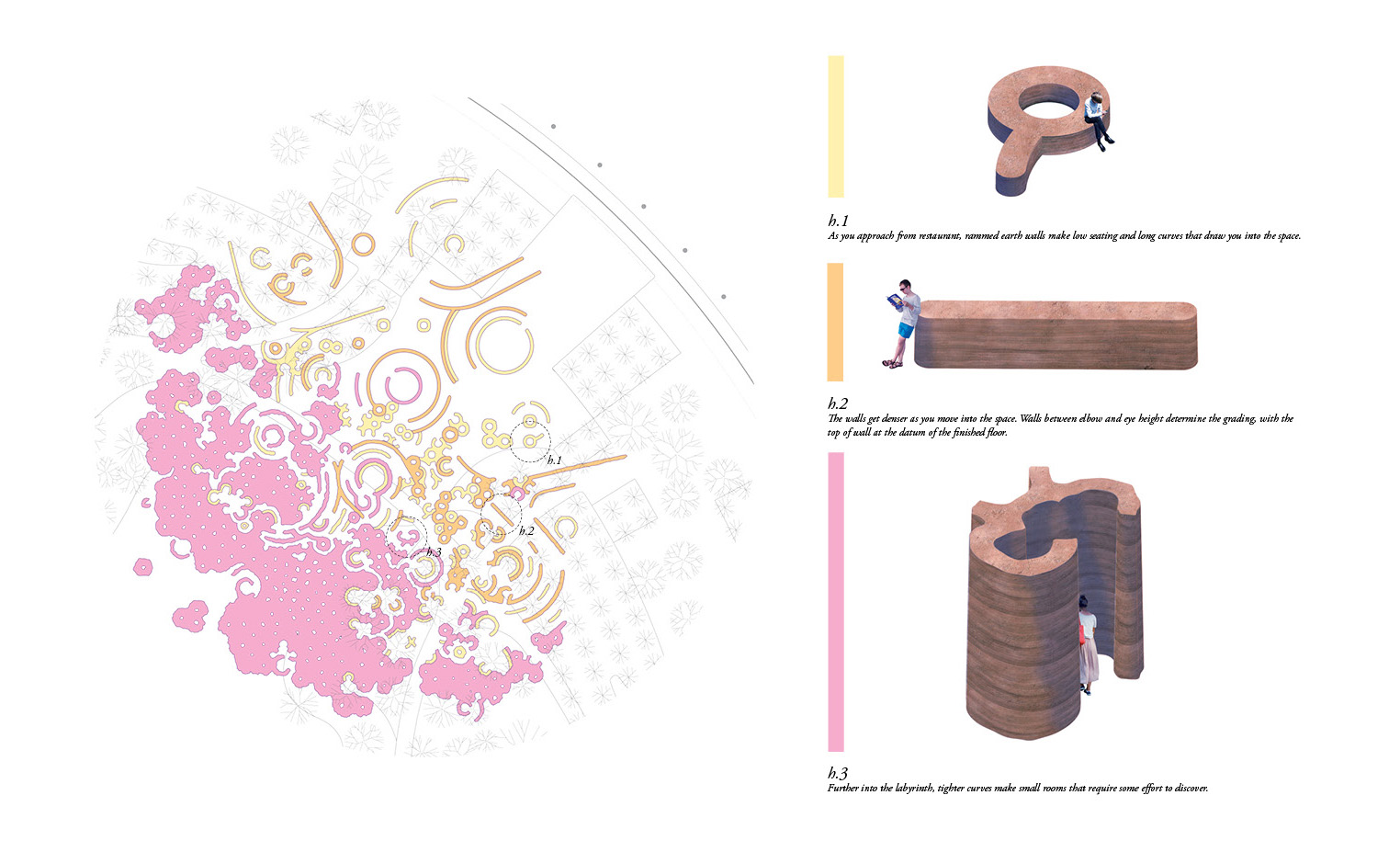

The area is dotted with very short-range beacons that ping your device as you encounter artifacts embedded in the soil, revealing fragments of text, audio, and images. Each fragment is a key to small intranet asynchronous forum, so that each object becomes the nucleus of a discussion.

The top of the wall is infilled with soil and planted with cobalt flowers that grow to cover the plateau. Its thermal mass creates a microclimate 10°
C above ambient, allowing native plants of the DRC to be grown against the southern face. Thick fronds of plantain and papaya trees create an additional barrier. If you approach from any other direction you are confronted with this thicket and the looming wall above it.
 Diagram of components embedded in 1:1 model.
Diagram of components embedded in 1:1 model.
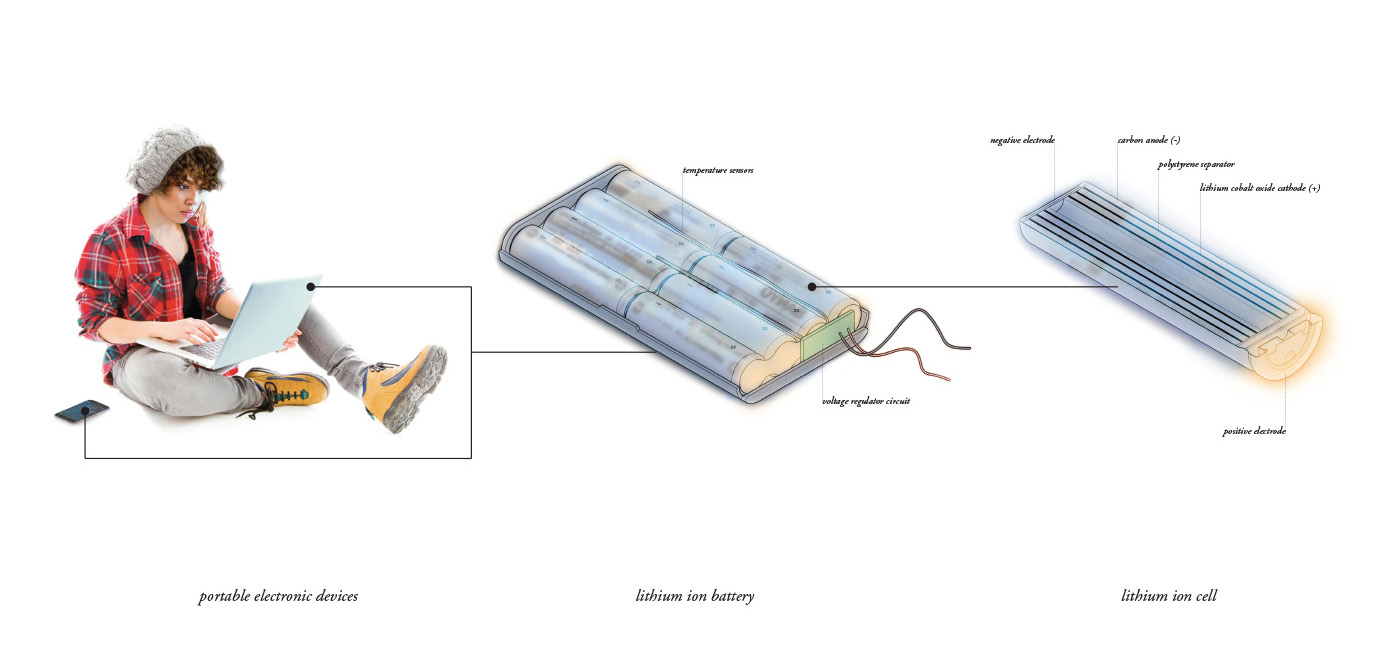
 There is a unique ecosystem of plants that can grow in copper and cobalt rich soil. The most charismatic of those plants is Crotalaria cobaliticola, which is colloquially called “La Fleur du Cobalt” in the DRC. “Fleur du cobalt” translates literally to “Cobalt Flower”, and it is so named because it is used to identify cobalt rich soils. Other plants in this biome will either succumb to cobalt toxicity at high concentrations or can also be found in areas without cobalt. This crotalaria fulfills both tests – it can tolerate high cobalt and does not grow in areas without it – so it is useful for deciding where to dig. Its common name, “Rattlepod”, comes from the pods that dry on the plant with loose seeds inside and rattle in the wind. In this proposal, it is used signal “there is cobalt here” at Apple Park.
There is a unique ecosystem of plants that can grow in copper and cobalt rich soil. The most charismatic of those plants is Crotalaria cobaliticola, which is colloquially called “La Fleur du Cobalt” in the DRC. “Fleur du cobalt” translates literally to “Cobalt Flower”, and it is so named because it is used to identify cobalt rich soils. Other plants in this biome will either succumb to cobalt toxicity at high concentrations or can also be found in areas without cobalt. This crotalaria fulfills both tests – it can tolerate high cobalt and does not grow in areas without it – so it is useful for deciding where to dig. Its common name, “Rattlepod”, comes from the pods that dry on the plant with loose seeds inside and rattle in the wind. In this proposal, it is used signal “there is cobalt here” at Apple Park.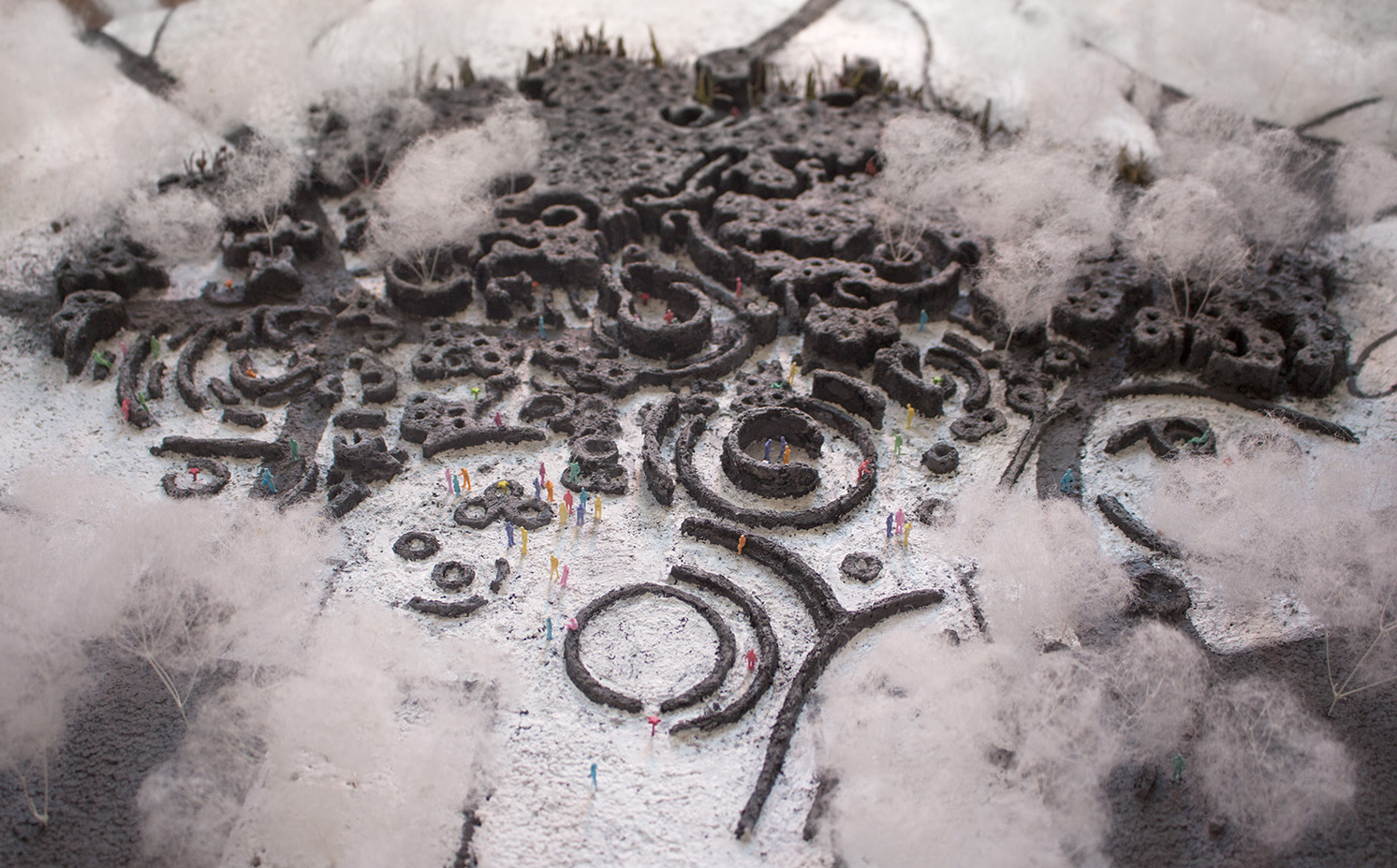
Project Narrative
The separation of digital and physical life has repeatedly proven itself to be a deep psychological fissure on a cultural scale, more complex and significant than the patronizing critiques of selfie-loving millennials penned by irate baby boomers imply. The consequences of actions in digital life have serious consequences in physical life. It’s clear that social, economic, class, and other structures exist independent of these two ‘lifes’, receiving input from both simultaneously while feeding back to shape each of them separately. ‘Place’, in the sense of a concentration of these structures, is no longer tethered to physical space.
The idea of a spirit of a place extends far into antiquity to at least the Roman concept of ‘genius loci’, and similar tutelary deities are found in religions across the world. As the ghost of a person is a spirit without a body that can still affect living people, a ghost of a place could be unmoored from a physical location but still associated with the place and accessed by the people who make up its constituency. Throughout this project, I use the term ‘ghostworlds’ to discuss this extended site.
Landscape Architecture, as a field concerned with spatializing social structures and the intentional production of public space, is perfectly positioned to experiment with new spatial paradigms that bridge these two manifestations of social life. This thesis is an experiment in treating a site as both the physical space and its extended existence as a ‘ghostworld’.
A case study in this dissociation between people and the consequences of their actions (on terrain, weather, vegetation, and other phenomena within the domain of Landscape Architecture) is embedded in the very material with which we access the digital layer. Cobalt is a critical ingredient in the lithium ion batteries that allow electronics to be portable. It is a geographically limited resource, with over 60% of the global supply originating in the Democratic Republic of Congo (DRC). A 2016 Washington Post exposé revealed the violently inhumane conditions associated with cobalt mining in the DRC and raised consumer pressure on electronics manufacturers, but ultimately did not result in significant changes to the industry’s practices. To expand on the aphorism, “out of sight, out of mind,” it is easier to exploit people or natural resources when they are distant abstractions.
Theater theory gives some methodological precedent for how to jolt an audience into critical thought. The Russian Formalist critic Viktor Shklovsky coined the term ‘defamiliarization’ as the process of making something familiar seem strange, and the playwright Berthold Brecht described theatrical techniques to produce an ‘alienation effect’ that would allow the audience to consider familiar actions intellectually rather than being empathetically immersed in the drama. While these concepts concern common things and actions that, through familiarity, have faded into the background of life, the common things and actions addressed by this project have always been disguised beneath many layers of abstraction and obfuscation. The purpose of this proposal is to drag the mines into the sightline of engineers with the power to make manufacturing decisions, rendering them visible as a sort of haunting.
“At the moment we something beautiful, we undergo a radical decentering… It is not that we cease to stand at the center of the world, for we never stood there. It is that we cease to stand even at the center of our own world. We willingly cede our ground to the thing that stands before us.”
-Elaine Scarry, On Beauty and Being Just